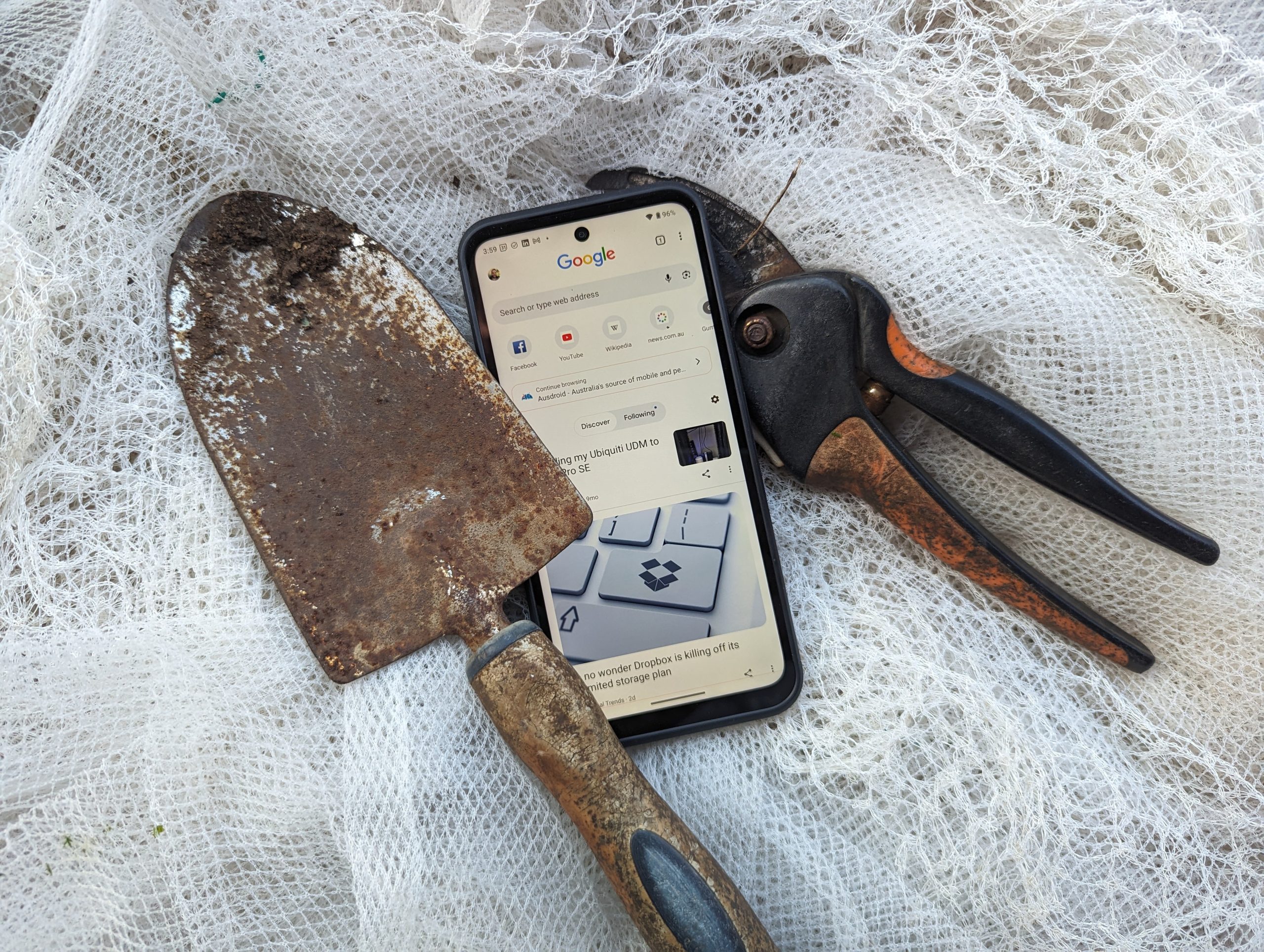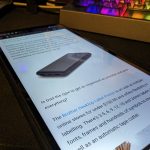There’s a considerable percentage of us that have had that moment of horror when you drop a phone. The world slows as you see your device tumble towards the ground, inevitably landing on a corner, smashing the screen and costing you dearly. Or will it?
The Nokia XR21 is a ruggedised device that is said to be ready for just about anything with some solid specifications. Specifically, the drop, dust and waterproof design makes it capable of handling some of the most destructive users or deliberately destructive reviewers.
Design and specs
Something I want to acknowledge immediately is the minimalistic packaging and, apart from the wrap on the device, completely recyclable. In the current age, it should be the norm for companies to consider this in their device presentation, but it does deserve acknowledgement.
At first glance, you could easily dismiss this as another in the plethora of mid-tier devices. But that would quickly change when you take a moment to look at and feel the device. On the first touch of the device, it feels solid and durable, not requiring the protection of a case; given some of the things I’ve put it through during review, that’s a good thing.
What an amusing moment: Unboxing a review unit of the new @NokiaMobile #XR21, and I dropped it.
I'm happy to report it CAN, in fact, survive being dropped from approx. 1.5m onto a slate floor. That's good since I've been given a licence to test the "rugged" claims! pic.twitter.com/gATT27i450
— Phil Tann (@prymal81) July 31, 2023
As Alex noted when the XR21 was released in May:
The Nokia XR21 comes with a 6.49-inch PS LCD (1080 x 2400 @ 120Hz refresh rate) and is powered by an Octa-Core Snapdragon 695 5G chipset processor, 6GB RAM, 128GB onboard storage, though it’s unclear if this can be expanded via MicroSD card.
A tip of the hat to HMD Global for the inclusion of an environmental impact profile on the product page.
So, regarding the specs, it’s not bleeding edge, but it’s no slouch either, which was a delightful surprise when I shifted to it for the review. The connectivity is what you’d expect, and the 4,800mAh battery is plenty to get through a reasonably heavy day of use; the usual caveats around critical apps needing to be exempt from “optimisation” (aka. Background shutdown) apply. When I saw the device’s size, I expected perhaps a little better in terms of battery capacity and life but the engineering required to make a phone take this much punishment takes up space.
So when it got to actual use, I found the battery life interesting with the Nokia XR21 because, provided you’re not doing anything intensive, it’s capable of delivering a solid day of use. But being on the move a lot and regularly hot-spotting from my phone, I found that using the hotspot was a surprisingly quick way to deplete the battery, and I did need a charger on more than one occasion.
In what other people have labelled “normal” use, though, it’s been a beast with a genuine full day of use without hassle. On quieter days, i.e. less screen time, I’ve achieved a couple of days (6 am – 9 pm the following day) on a couple of occasions.
The screen is ever-so-slightly recessed from the edges around it to protect from some of the potential for scratches, but that’s really not too much of a concern given the screen is made of Corning Gorilla Glass Victus, which — despite my best efforts — I haven’t managed to break on any devices yet.
The screen was a delightful surprise to me, given the relatively low cost of the device; I wasn’t expecting anything special, but it’s a good screen outright, not just considering the price. Another of the value propositions in purchasing a Nokia branded device is the three years of OS updates and four years of security updates; while many users don’t hang onto phones that long, provided you haven’t destroyed it, the resale value increases with these offerings.
Camera: It does a decent job
The camera specs are solid, offering a 64MP primary (wide) and an 8Mp Ultrawide lens and the selfie camera is a 16MP offering. The specs are alright, and so are the pictures; if you’re looking for a better camera in the price range it’s certainly out there but you’ll lose the rugged features.
If you’re after a happy snap camera that can handle some variability in lighting, capture moving targets relatively well and produce photos you’ll not be disappointed in then you’re likely going to be happy with this. If you’re looking for the low light performance of a Pixel device or some of the flashier features like light and colour correction, this probably isn’t the phone for you.
As you can see, the photos present pretty well but lack a bit of the flare that other phones put on their imaging.
Daily Use: It’s a rugged surprise package
I’ve done a few reviews of rugged phones over the years, and they’re typically very rugged but not great phones. This one has really impressed me with a complete package that will stand up to just about anything, short of outright attacks on it with the intent to break it. When you consider water ingress, given the fact Nokia went beyond the typical IP68 rating and progressed to IP69K (capable of withstanding a high temperature and high-pressure water stream)
You can choose from just two colourways, Pine Green or Midnight Black, simplifying choices. Our review unit is the Midnight Black, but I quite like the look of it. Interestingly, despite some outright abuse, four weeks later, the device was packed up and sent back for the next reviewer to
Is the Nokia XR21 worth buying?
My honest feeling after almost a month with this in my pocket and on my desk is that it’s a good buy. While a few bits of polish are missing compared to more expensive and generational devices like the Pixel, iPhone and Find X range, nothing is missing that is critical to the functionality, and you save quite a bit of money.
Like many devices in the current age, you won’t get a power brick in the box. So, if you want one or need another one around your home or workplace, make sure you grab one at a retailer near you.
The Nokia XR21 lives up to the moniker of rugged without the bulk and typical aesthetic of a rugged device. It’s higher rated than your typical consumer device (IP68/IP69K) and has some, but not massive, sacrifice in daily functionality. So that brings me to the conclusion of whether or not I would buy one. I wouldn’t but I don’t need the rugged features!
Given the functionality and capability of the phone while still being able to take a beating, Clumsy users and tradies: This is your next Android device!












